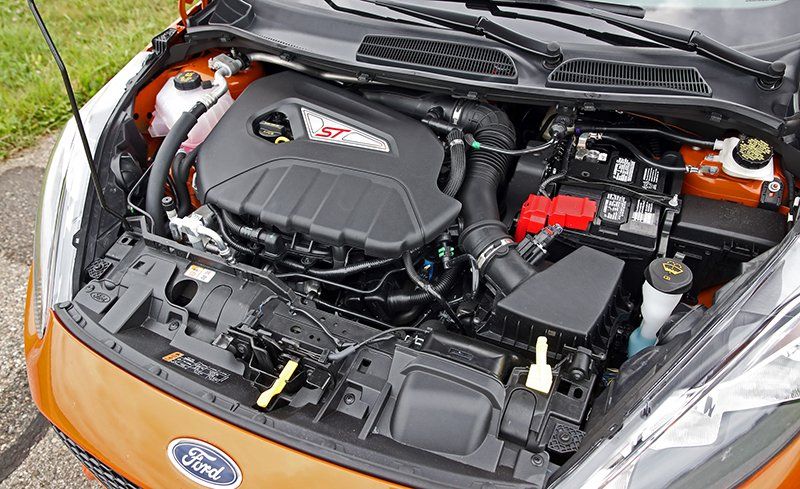How to Diagnose Ford Fiesta Engine Issues and Prevent Future Problems
How to Diagnose Ford Fiesta Engine Issues and Prevent Future Problems
Blog Article
Opening the Power of Engines: A Comprehensive Guide to Performance and Effectiveness
Understanding the intricate auto mechanics of engines is important for both performance fanatics and everyday chauffeurs. The solutions may redefine our method to engine performance and efficiency in methods that are both informing and important.
Comprehending Engine Fundamentals
What comprises the essential technicians of an engine? At its core, an engine is an equipment created to convert fuel into mechanical energy through a collection of controlled explosions or combustion processes.
The crankshaft after that changes this linear motion right into rotational power, which inevitably powers the vehicle. The camshaft regulates the opening and closing of the valves, managing the intake of air and fuel and the expulsion of exhaust gases. In addition, the engine depends on a carefully calibrated fuel-air combination, ignition system, and cooling system to make sure optimum efficiency and effectiveness.
Recognizing engine basics likewise involves identifying the importance of engine cycles, such as the four-stroke cycle, that includes consumption, power, exhaust, and compression strokes. Each phase is crucial in ensuring the engine functions efficiently and properly. Proficiency of these basic technicians lays the groundwork for discovering extra complex engine dynamics and efficiency metrics, crucial for optimizing both power outcome and effectiveness.
Secret Performance Metrics
Key efficiency metrics are crucial for evaluating an engine's performance and power result, offering important understandings for both producers and consumers. These metrics act as benchmarks for engine efficiency, permitting for informed decisions in style, production, and acquiring.
One of the main metrics is horsepower, which quantifies the engine's capability to execute work over time. Torque, gauged in pound-feet, is one more crucial metric that shows the engine's rotational force, directly impacting acceleration and towing capacity. Gas effectiveness, generally measured in miles per gallon (MPG) or litres per 100 kilometers (L/100km), examines exactly how efficiently the engine transforms fuel right into movement, affecting ecological factors to consider and operational prices.
Additionally, thermal performance measures just how well an engine converts gas power into beneficial work, revealing insights into energy losses mainly with warmth. Exhaust degrees, consisting of carbon dioxide and NOx, are also important, mirroring the engine's ecological effect and conformity with regulative standards.

Tuning Methods for Efficiency
Tuning methods play a considerable role in enhancing engine performance by enhancing efficiency metrics recognized in earlier discussions (ford fiesta engine). Numerous methods exist to tweak an engine, each contributing to enhanced gas economic climate and minimized emissions
One efficient technique is adjusting the air-fuel ratio, making sure the engine runs within the optimum burning regime. A leaner mix can boost fuel effectiveness, but it should be balanced to prevent misfires or engine knock. Furthermore, reprogramming the engine administration system can recalibrate criteria such as ignition timing, which further boosts efficiency while preserving power output.
Another crucial method involves modifying the consumption and exhaust systems. Upgrading to high-performance air filters and exhaust headers can minimize back pressure, facilitating much better air flow. This enables the engine to take a breath more openly, resulting in enhanced burning effectiveness.
Furthermore, the implementation of advanced tuning devices, like dyno testing, provides accurate data that makes it possible for targeted modifications. Routinely monitoring these efficiency metrics guarantees that adjusting initiatives produce the preferred efficiency results. Collectively, these methods not only boost engine performance yet also add to long-lasting sustainability in engine operations.
Upkeep for Ideal Performance
Routine engine upkeep is crucial for accomplishing optimal efficiency and longevity. A well-kept engine not only operates successfully but also decreases the risk of expensive repairs and malfunctions. Trick components requiring routine focus consist of oil, filters, belts, and spark plugs.
Altering the engine oil at advised intervals is essential, as oil lubes relocating components and avoids getting too hot. Replacing oil and air filters ensures that impurities do not hinder engine feature. Ignoring these elements can result in reduced efficiency and possible engine damage.
Furthermore, inspecting and replacing used belts and pipes is important to stop unexpected failures. Timing belts, specifically, need to be replaced according to the producer's routine to stay clear of catastrophic engine damage.
Ignition system ought to likewise be inspected and changed as essential, because they play an important duty in ignition and gas effectiveness.
Future Patterns in Engine Innovation
Embracing advancements in modern technology, the future of engine style is poised to reinvent efficiency and performance throughout different applications. Hybrid and completely electric powertrains are becoming significantly traditional, providing lowered discharges and boosted fuel efficiency.
In addition, developments in products science are leading to lighter, important source more powerful elements that boost engine performance while lowering energy intake. Advanced manufacturing strategies, such as 3D printing, enable the hop over to these guys creation of complicated geometries that boost airflow and thermal administration, thus optimizing burning procedures.
Furthermore, the assimilation of synthetic knowledge and maker learning is readied to transform engine diagnostics and performance tuning. These modern technologies can examine vast quantities of data in real time, making it possible for anticipating maintenance and tailored performance improvements.
Conclusion
In final thought, unlocking the power of engines needs an extensive understanding of their mechanics and performance metrics. Implementing reliable adjusting strategies and adhering to routine upkeep methods substantially improve engine abilities.
In addition, the engine counts on a carefully calibrated fuel-air blend, ignition system, and cooling down system to make certain ideal efficiency and efficiency.
Understanding engine essentials also entails acknowledging the importance of engine cycles, such as the four-stroke cycle, which consists of consumption, power, exhaust, and compression strokes. Proficiency of these fundamental auto mechanics lays the groundwork for exploring extra complicated engine dynamics and efficiency metrics, important for maximizing both power output and effectiveness.

Welcoming innovations in modern technology, This Site the future of engine layout is positioned to reinvent performance and efficiency across different applications.
Report this page